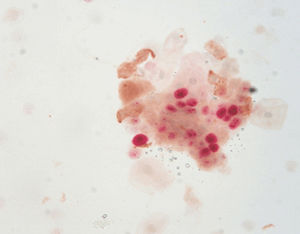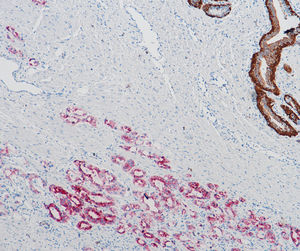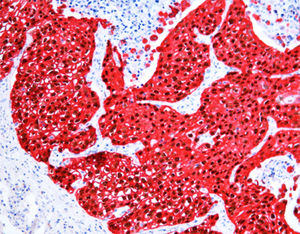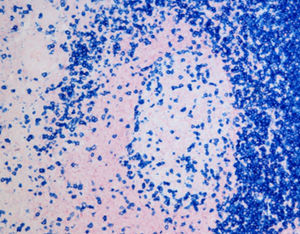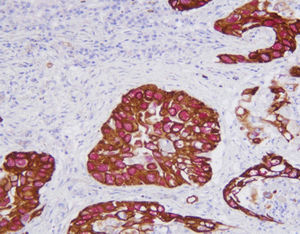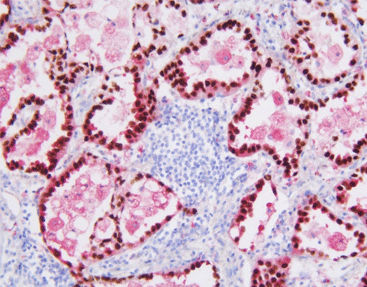
- Laboratory
- Laboratory medicine
- Staining solution reagent
- Celnovte Biotechnology Co., Ltd.

- Company
- Products
- Catalogs
- News & Trends
- Exhibitions
Staining solution reagent kit SD8101tissueimmunohistochemistry
Add to favorites
Compare this product
Characteristics
- Type
- staining solution
- Applications
- tissue, immunohistochemistry
Description
TTF-1/Napsin A detection reagent (Immunohistochemical) is mainly used to qualitatively identify TTF-1 and Napsin A proteins. Using immunohistochemical dual staining detection and multiple antibody combination technology, there are detected two antigen targets at the same time on the same sample tissue section by one staining process.
Product Parameters
TTF-1 is expressed in the nucleus of thyroid follicular epithelium and alveolar epithelial cells. It is the primary marker for the differential diagnosis of lung adenocarcinoma. TTF-1 is expressed in more than 70% of non-mucinous adenocarcinoma subtypes, small cell lung cancer, a small portion of undifferentiated large cell lung cancer and atypical carcinoids, a small number of typical carcinoids. In addition, a small number of lung squamous cell carcinomas show TTF-1 positive expression.
Napsin A is expressed in normal alveolar type II epithelial cells and proximal and distal renal tubules. Napsin A shows positive in 80%~90% of lung adenocarcinomas. But Napsin A shows negative expression in almost all lung squamous cell carcinomas. The sensitivity and specificity of Napsin A are better than TTF-1. TTF-1/Napsin A combined primary antibody show higher sensitivity.
In non-small cell lung cancer, positive expression of TTF-1 and negative expression of NapsinA can occur in some large cell neuroendocrine carcinoma similar to adenocarcinoma. TTF-1/Napsin A combined primary antibody can effectively identify these tumor diseases.
Catalogs
No catalogs are available for this product.
See all of Celnovte Biotechnology Co., Ltd.‘s catalogsOther Celnovte Biotechnology Co., Ltd. products
MULTI-STAINING & DUAL STAINING
Related Searches
- Assay kit
- Solution reagent kit
- Blood assay kit
- Molecular biology reagent kit
- Immunoassay assay kit
- Infectious disease detection kit
- Research reagent kit
- Protein reagent kit
- Diagnostic reagent kit
- Laboratory reagent kit
- Enzyme reagent kit
- Molecular test kit
- Histology reagent kit
- Clinical assay kit
- Reagent medium reagent kit
- Immunology reagent
- Cytology reagent kit
- Dye reagent
- Antibody
- Buffer solution reagent kit
*Prices are pre-tax. They exclude delivery charges and customs duties and do not include additional charges for installation or activation options. Prices are indicative only and may vary by country, with changes to the cost of raw materials and exchange rates.

